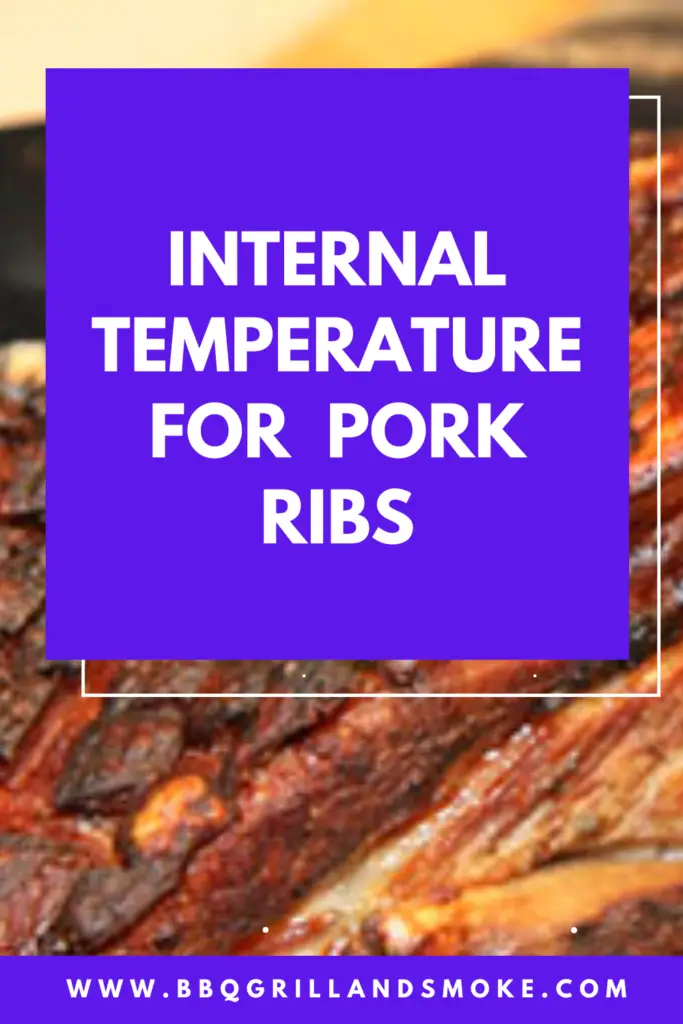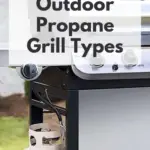I’m sure you tend to wonder to yourself whether your pork ribs are done or not. This is whether you’ve used a grill or smoker to cook pork ribs or not.

So, in this guide, I will be discussing the internal temperature of pork ribs. The details in this guide would give you a better understanding of when your pork ribs are done and also when they are finished.
The Best Internal Temperature for Pork Ribs
Since this guide will center on the internal temp for pork ribs, I might as well give you the best internal temperature.
So, to give you the answer to that, I will say that more or less 200 degrees Fahrenheit is the best internal temp for pork ribs.
I would also suggest that you cook all cuts of pork ribs to an internal temperature of around 198 degrees Fahrenheit to 202 degrees Fahrenheit.
However, that is easier said than done because it is quite a concept to get a precise internal temp, all thanks to the thin layers of the meat and interspersed bones.
From one end of your rack to the other, most of the temperature readings that were taken directly into the rib meat can differ rather greatly.
This could also change based on your closeness to a rib bone. However, in spite of these concerns, a precise instant-read thermometer in addition to a few other tips and tricks to check for doneness will result in soft and juicy pork ribs always.
The Difference Between Done and Finished in Grilling
As mentioned above, in this guide, you will also get a better understanding of what it means when your pork ribs are done and when they are finished.
The terms “done” and “finished” might look the same, but the truth is that they are quite different, which means they don’t mean the same thing.
When your pork ribs are done, it means that they have reached the internal temp where they are now safe enough for consumption.
However, on the other hand, when your pork ribs are finished, it means that they are at their tastiest.
Based on the USDA, to consume your pork ribs safely, they recommend that you cook them at 145 degrees Fahrenheit.
However, the key to making your pork ribs as yummy and soft as they can be, I would recommend you slow cook them at 190 – 230 degrees Fahrenheit.
And, to be more accurate, you can make use of a meat thermometer to measure the internal temp of your pork ribs.
You should also keep in mind that this might be quite tricky, thanks to the fact that the meat is somewhat thin and, typically, it is quite hotter next to the bone.
Common Methods for Checking Ribs
Below will be some of the popular ways to determine if your pork ribs are done or not:
- Visual Inspection
- Bend Test
- Bone Twisting
- Probing
- Simply going by the time
- Actually cutting into the ribs (This is not a recommended method)
The truth is that none of these methods are 100% accurate. However, some of them work better than other ones.
And, you shouldn’t worry because there’s a 100% accurate way you can use to determine when your pork ribs are done or not.
The most popular way to determine when pork ribs are done is by looking for the bones to start sticking out.
You will get to find about a quarter inch of the bones, which is also referred to as pull back, starting to stick out in all parts of the slab, or perhaps, just portions of it.
That’s a clear sign that your pork ribs are more or less ready. However, by any stretch, this is not a reliable method.
But, it is a simple visual indication that won’t take much of your time. All you need is just a glance.
Another method of determining when your pork ribs are done is by bending the slab of ribs. All you need for the bend test is just a pair of tongs or gloves.
However, it would also require a bit more time compared to just peeking at the bones. But still, it is not a complex method.
All you need to do is to pick up the slab, and then proceed to give it a bit of a bend, making a U shape.
Your pork ribs are not ready if there’s no separation or cracking between the ribs.
If they are ready, a slab of ribs should crack easily between the bones and even nearly break into two.
There’s also another method that is commonly referred to as the “Toothpick Test,” which is commonly used by many pit masters.
You should be familiar with this method if you have some experience cooking brisket. You can also just probe the meat in between the bones.
And, to do that, you will need to use the point of a temp probe needle. For the probe to slide in and out of the meat cleanly. You should expect the slightest resistance when you are doing this.
However, there are still some other methods you can follow in determining when your pork ribs are done.
Some of these include twisting a bone, cutting into the ribs, and also not checking it at all.
This is done in a way that some grillers just cook their pork ribs for a particular amount of time. Then, just simply pull out their pork ribs when the time is up.
Things To Keep In Mind When Smoking Pork Ribs
Below are some things you need to keep in mind when you are smoking or cooking your pork ribs:
The thickness of the ribs is what will determine how long the ribs will take to cook. You should also know that if your ribs have a lot of fat, they will take a longer time to cook. This is thanks to the fact that fat takes time to melt down.
It will also take a longer time to cook your ribs if you decide to keep the smoked meat on the bone. However, if you don’t have that much time, I would suggest you debone your pork ribs.
Conclusion: Internal Temperature for Pork Ribs
The best temperature for cooking pork ribs is 190 – 203 degrees Fahrenheit. Also, the safe meat temp for pork ribs is 145 degrees Fahrenheit.
However, I would suggest you leave your pork ribs a little longer at the same temp, as this would make them much softer and juicier.
You should also know that accurate smoking times and temperatures are determined by the type of ribs you are cooking.
And, with all that being said, I’m sure you now have a better understanding of the internal temperature of pork ribs.





